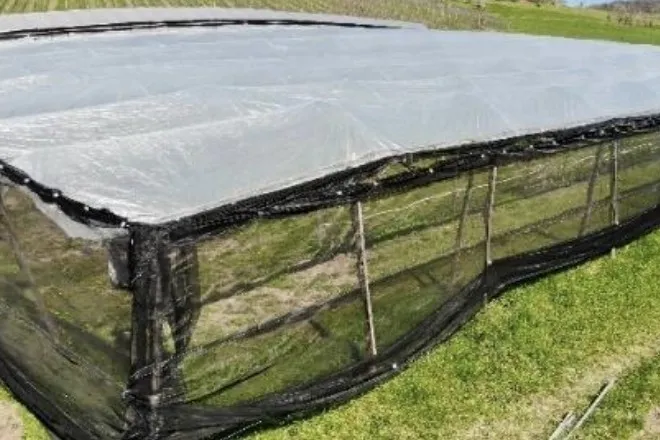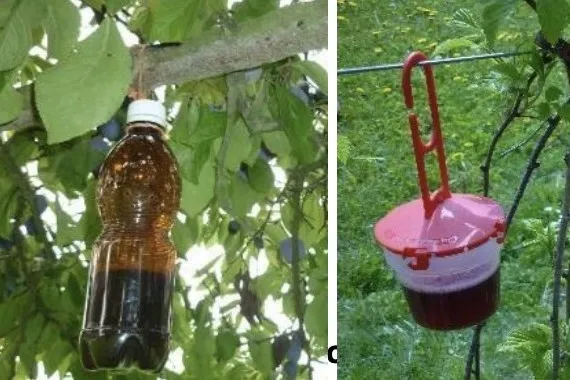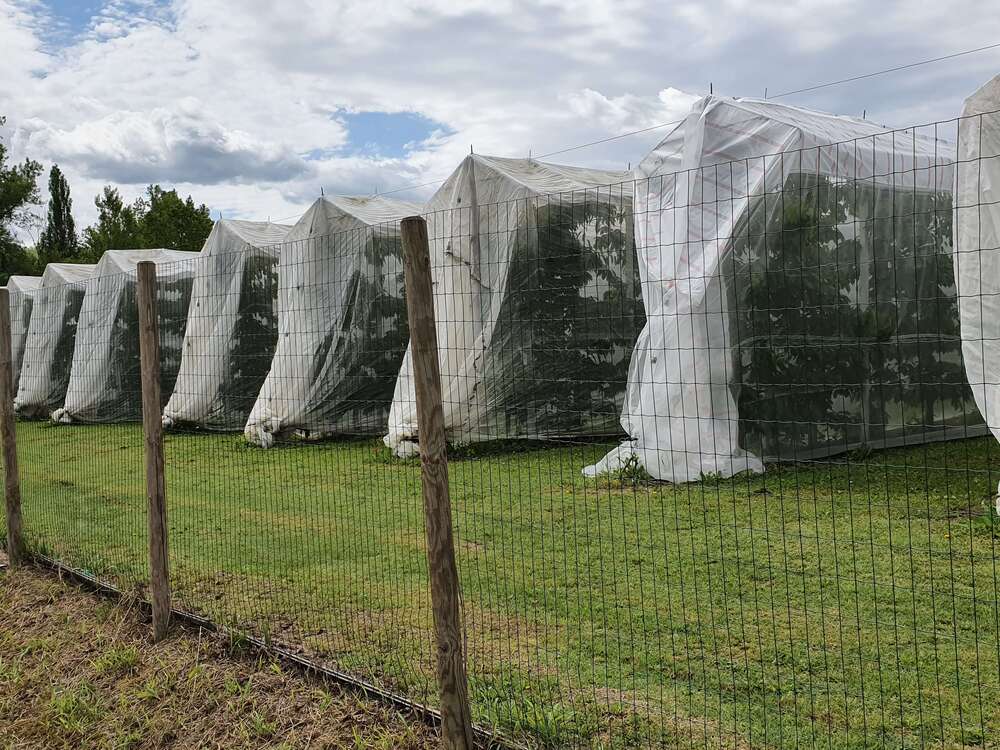The spotted wing drosophila Drosophila suzukii is an invasive pest that attacks stone fruits (berries, cherries, plums, grapes) and many wild berry-producing plants. Female adults of D. suzukii lay eggs in the fruits, from which the larvae develop.
The control strategy includes preventive measures, netting, indirect and direct control using plant protection products and parasitoid release. The combination of preventive and curative actions can reduce fruit perforation and/or larval development inside the fruit, thus minimizing economic losses.
Recommendations
- Netting (+++): use nets with mesh that does not deform and with a maximum mesh size of 1.0×1.0 mm. Close the nets right after flowering (Figure 1). Avoid contact between the net and the fruit. This measure is not suitable for tall cherry trees.
- Mass trapping (++): suitable for apricots and plums, but ineffective from the beginning of cherry ripening onwards, as cherries are more attractive than the baited trap. Use commercial or homemade traps made from plastic bottles with 5 mm holes on the top part (preferably red or black – Figure 2). Homemade bait mix: 1/3 water, 1/3 apple cider vinegar, 1/3 red wine, 0.05% acetone (optional) and two drops of unscented liquid soap.
- Spraying kaolin or hydrated lime as deterrents (+): kaolin (2%), hydrated lime (0.18%), apply with 500–1000 l/ha of water during warm weather conditions (>20 °C) and low relative humidity (~30%). Spray weekly starting from the color change of the fruit (from yellow to red). This method causes spray stains and is therefore not suitable for fresh market crops.
- Treatments with Spinosad (+): Spinosad (0.02%) has a partial effect, insufficient as a standalone measure. This treatment leaves measurable residues: strictly respect the pre-harvest intervals and application dosages.
It is toxic to beneficial insects and bees: do not apply on flowering crops or on damaged fruit with juice leakage. Check if Spinosad is approved or requires a special permit in your country.
 Figure 1: Netting is the most effective control measure against Drosophila suzukii. Photo: Thomas Alföldi (FiBL).
Figure 1: Netting is the most effective control measure against Drosophila suzukii. Photo: Thomas Alföldi (FiBL).
 Figure 2: Homemade traps (left) and commercial traps (right) for monitoring. Photo: Claudia Daniel (FiBL).
Figure 2: Homemade traps (left) and commercial traps (right) for monitoring. Photo: Claudia Daniel (FiBL).
Cherry Times – All rights reserved














